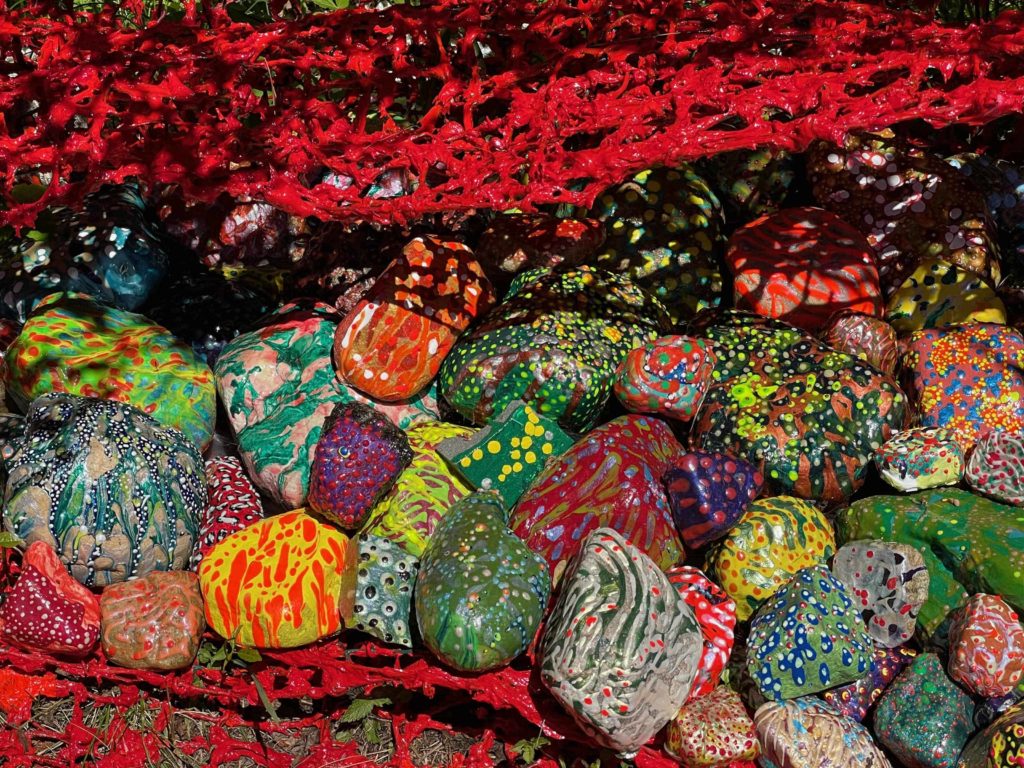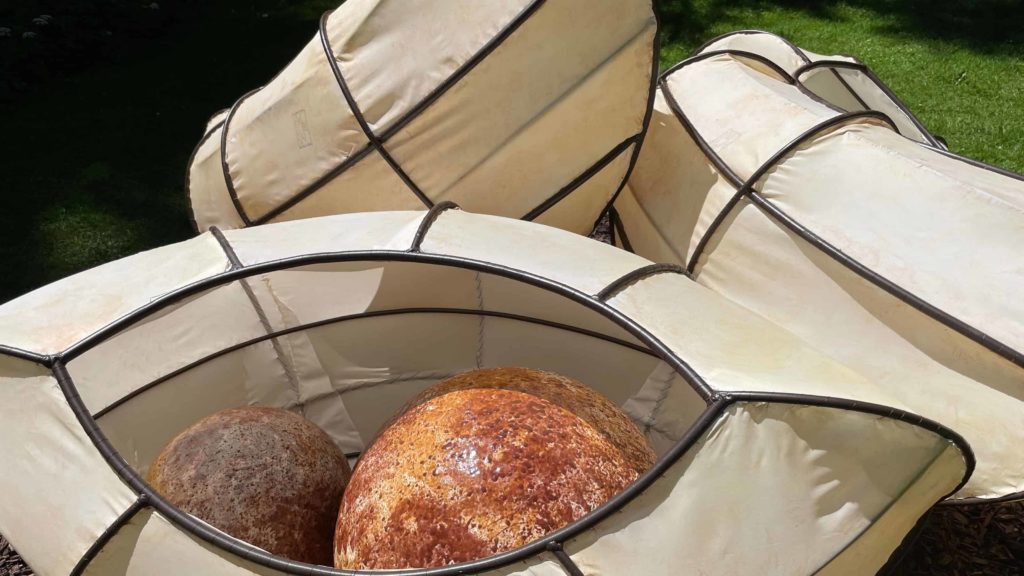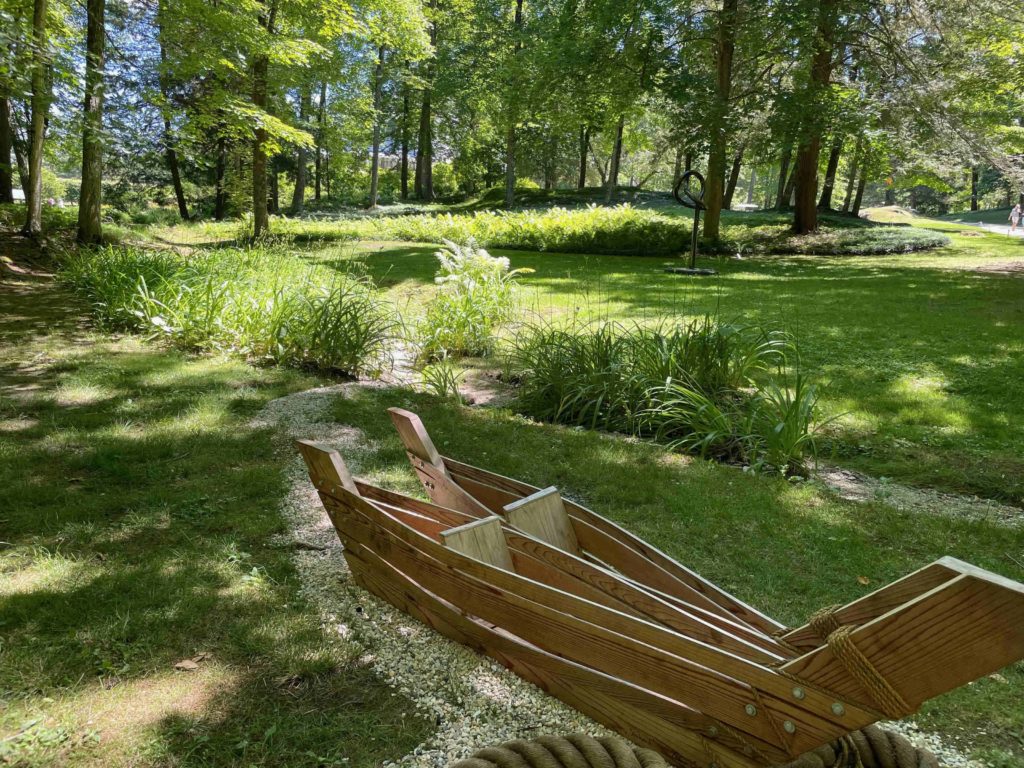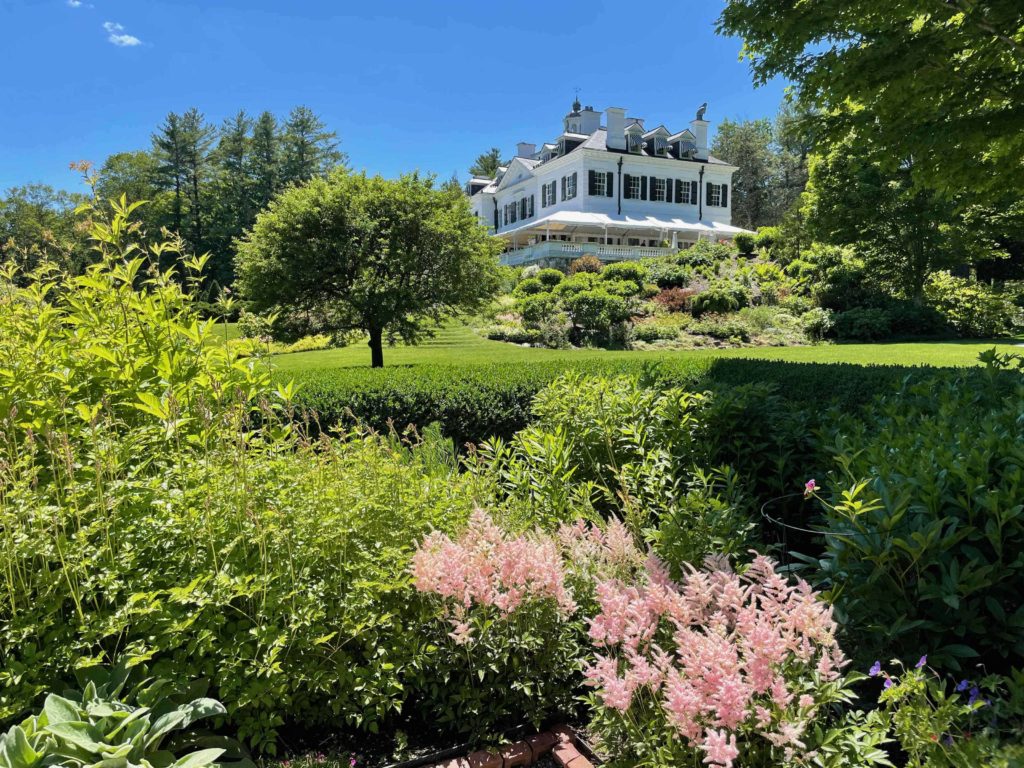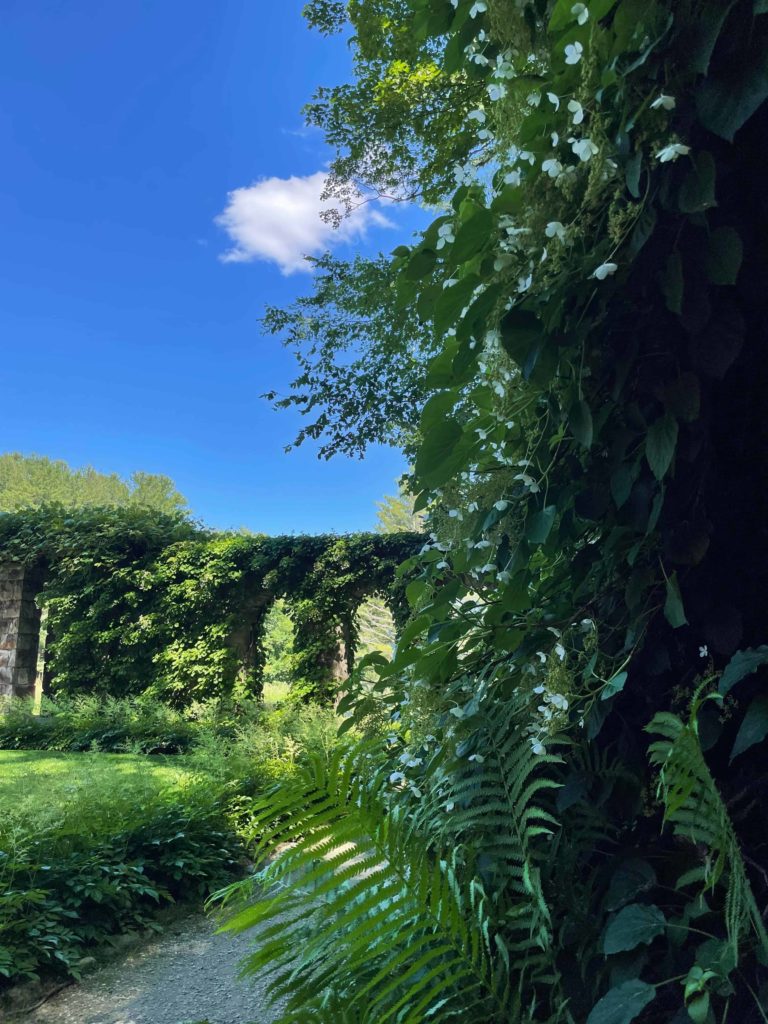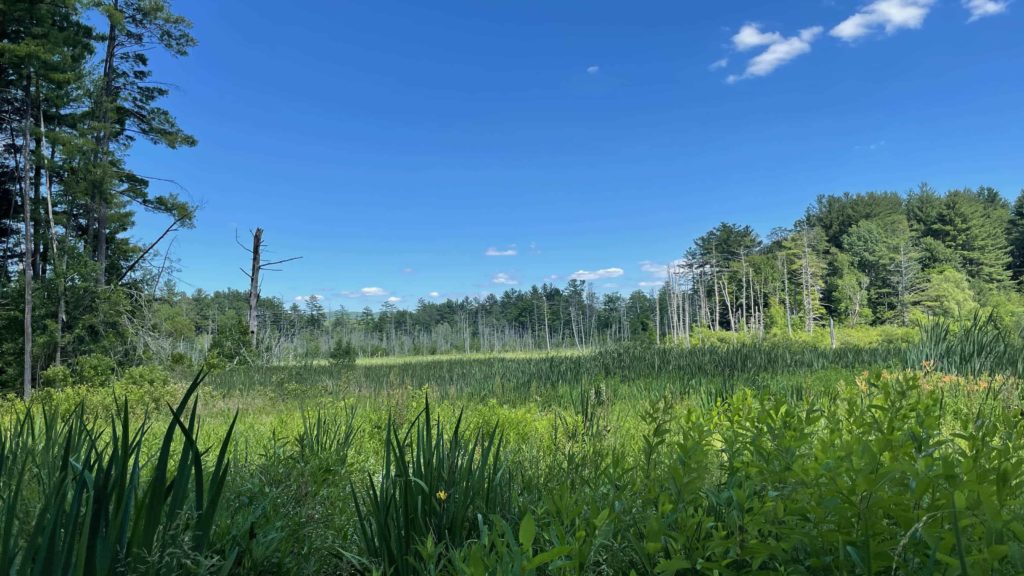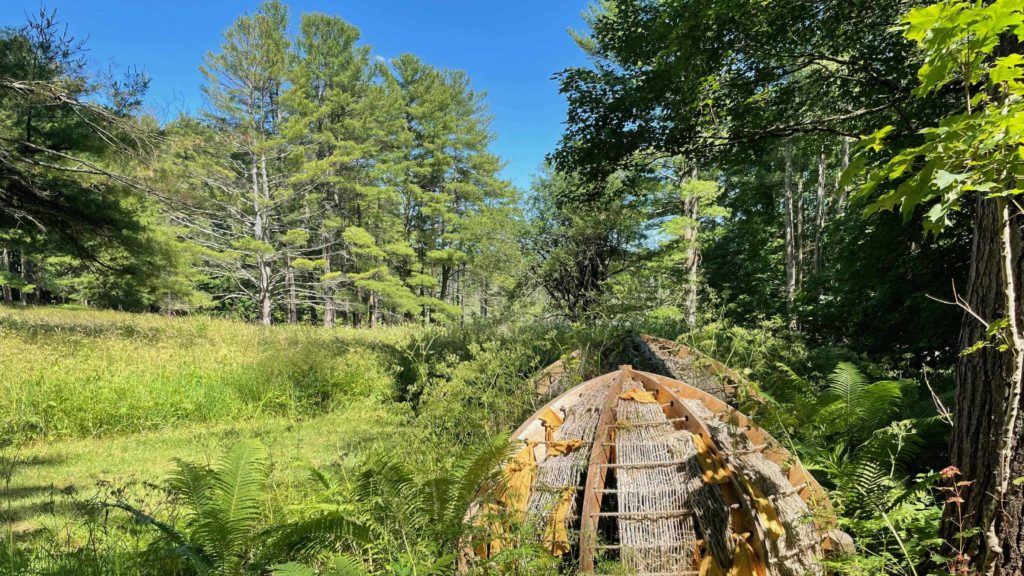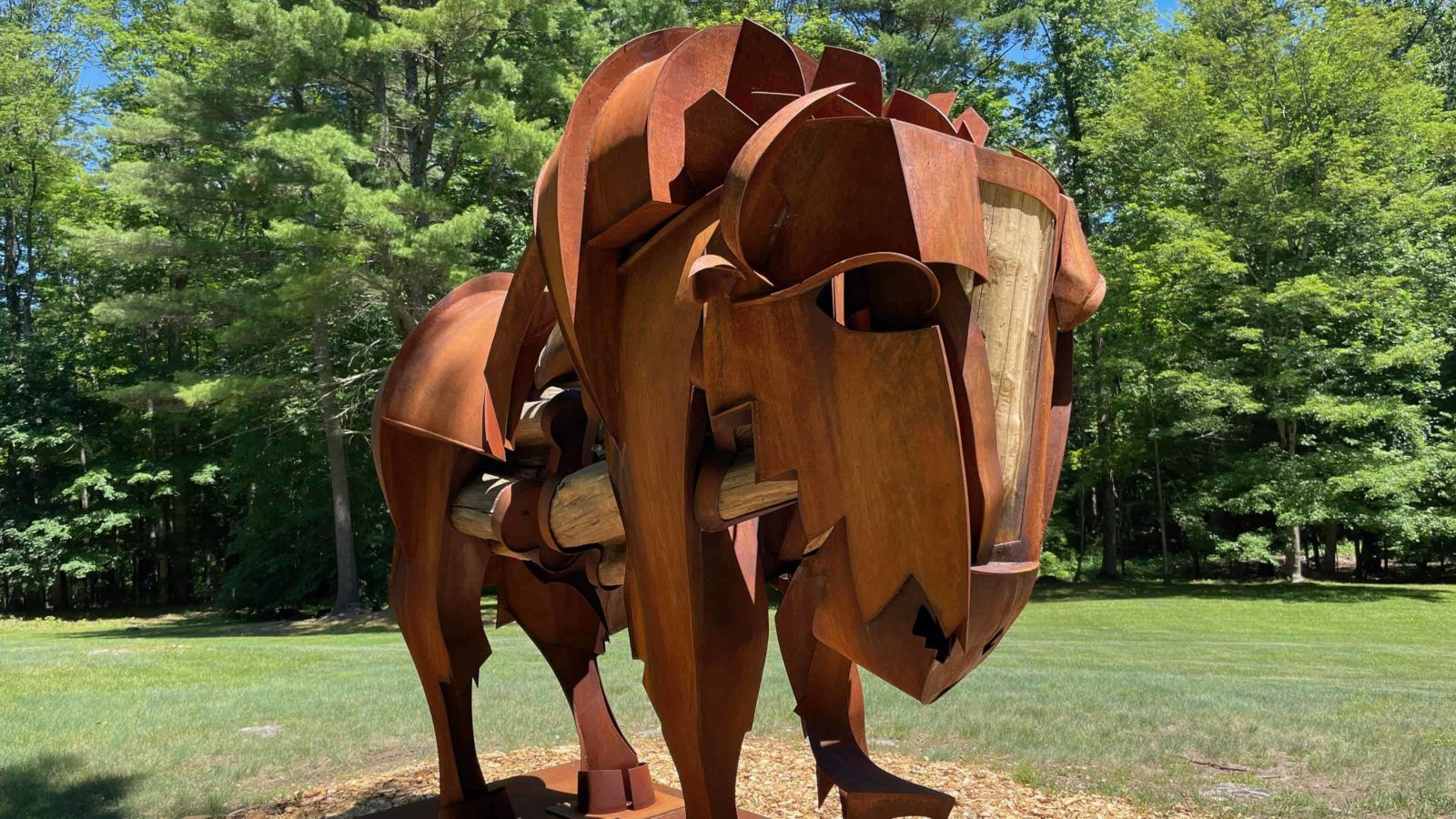He’s a massive figure standing here at the top of the hill. Broad-shouldered, bearded and muscular, he draws people close to him. A boy says he looks like a knight about to charge. A woman talking to a friend says his eyes are kind. I agree — he looks calm to me and confident in his strength. He is a life-sized bison made from Corten steel and locust wood, and he is looking down the hill, through the woods, into the Mount’s summer sculpture show.
Sculptor Jamie Burnes has named him Effram. In his studio in New Mexico, Burnes works with wood, stone, natural material, he explains on a self-guided tour. He will connect solid masses of found wood to form the core and build the work around it. The steel and the wood will age together, and he will hand-hammer the metal on the curves. Effram feels like a part of the landscape.
He seems to have company here this year. Sculpture Now has come back to the Mount, after a break during the pandemic, and many of the works this year have an organic element in the shapes they take, in what they’re made of or in the ideas they play with. Saturn tilts in a ring of melded iron tools. A shape like seed pod holds a gleaming kernel. Streamers of color weave together at the head of a pathway.
That element feels compelling to me, when I find it. When a sculpture show comes into a place with its own character, it makes sense to me to look for a sense of connection between them.

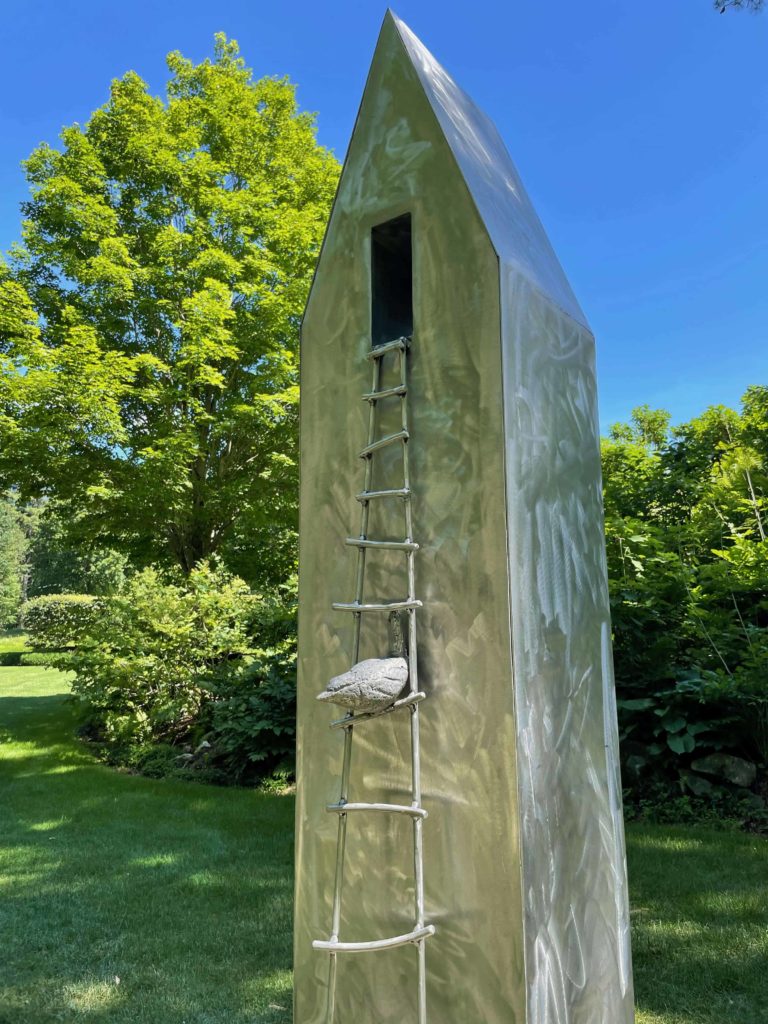
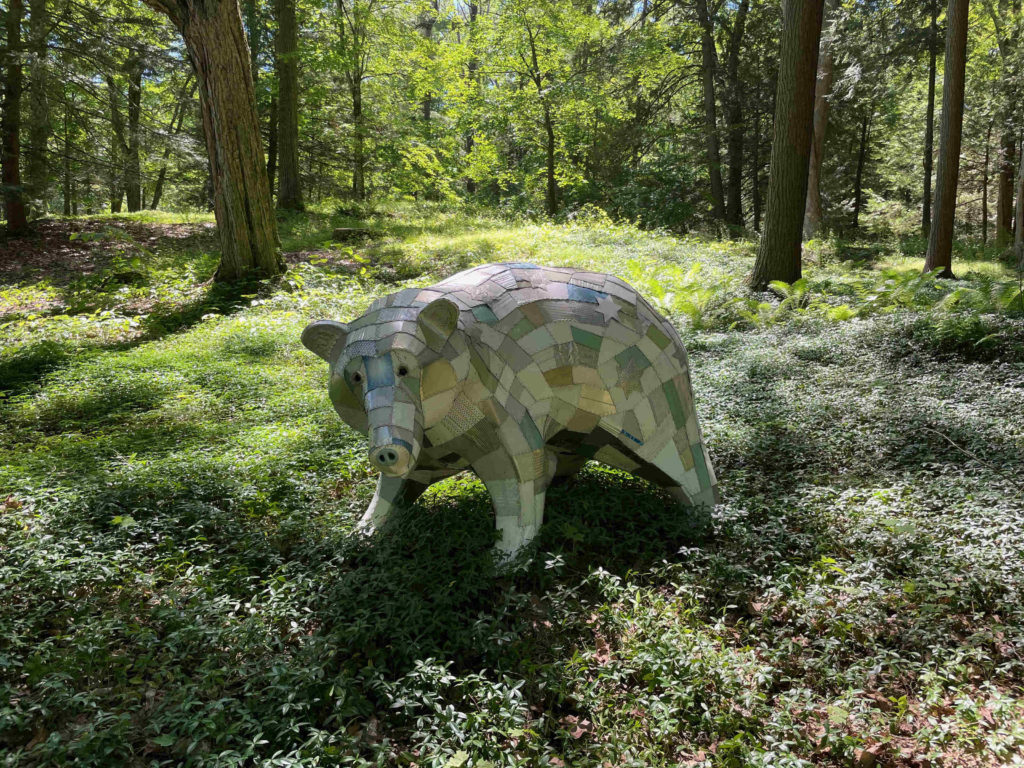
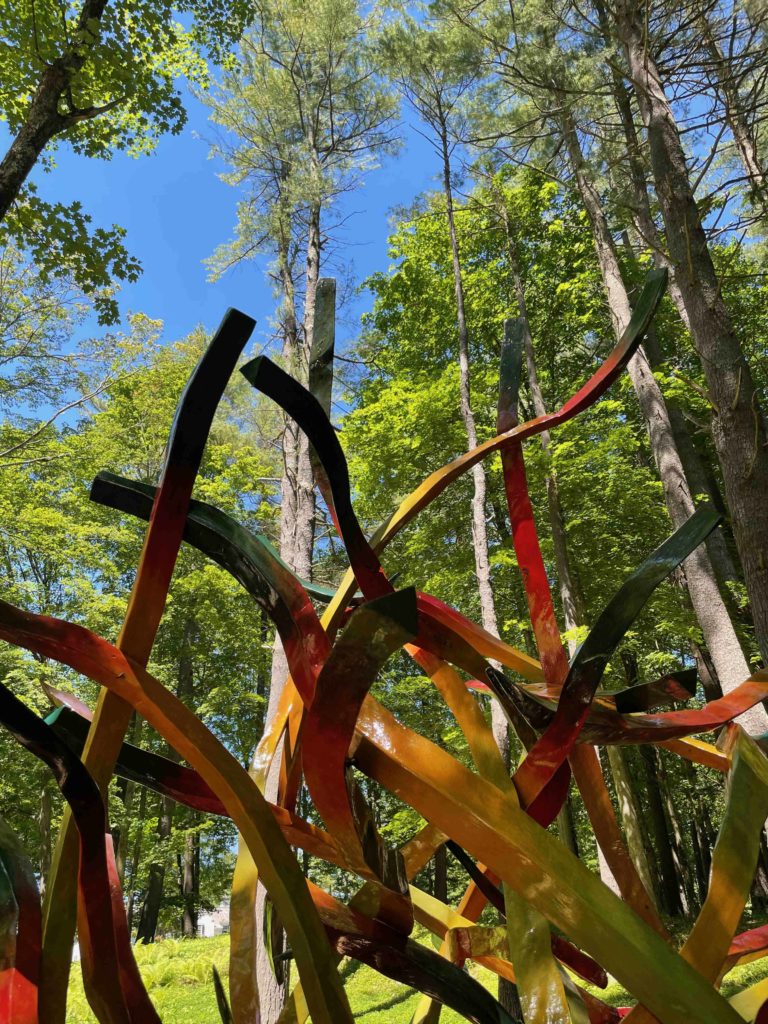
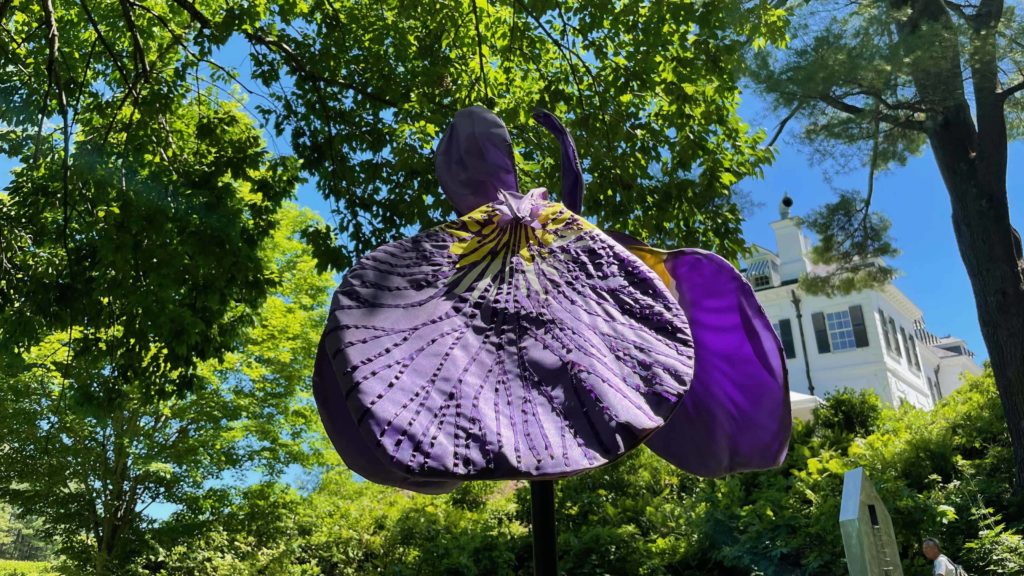
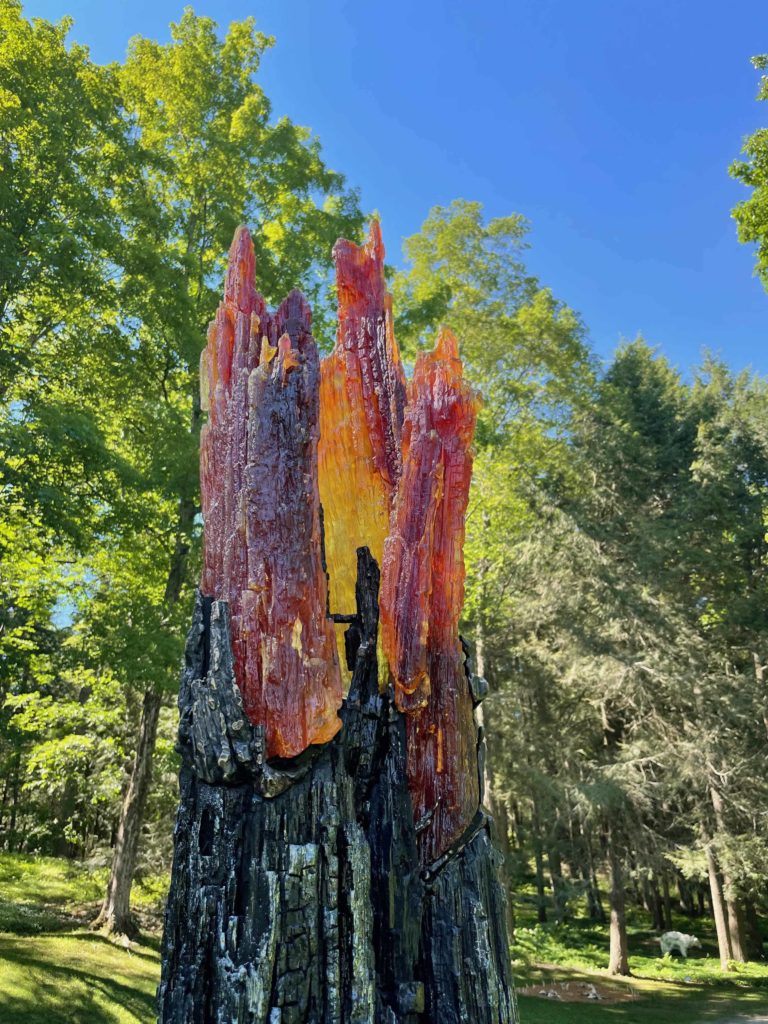
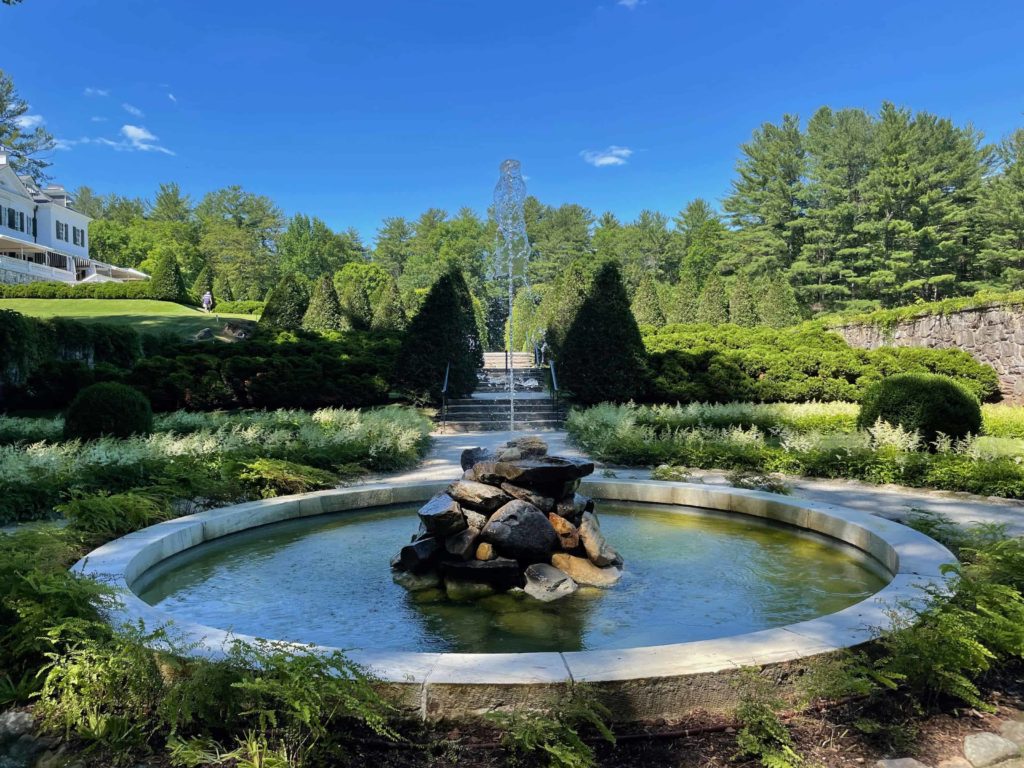
Sometimes it’s a simple thing, like the giant cloth irises flying like banners, and the flicker of a yellow wild iris growing near the pond. Some of the works, like the bright filaments of Joy, encourage me to come up close and look from different angles. The sky is vivid blue, and curving metal lines reach up toward the tall pines around them. And some works, like WildFire, have an energy and change in them, a call to contemporary challenges — amber glass thrusting up like flame from a burned stump.
It’s a beautiful afternoon to walk through Edith Wharton’s woods. The sun is out with a breeze to temper it, and the shade is welcome on the pathways. I have a map, but mostly I keep it in a pocket and just walk, looking for unexpected colors.
It feels like the story walk I’m reading along the trail as I go, about a father and daughter looking for butterflies. she is recovering from a long illness, and she’s looking for color on raw winter days. Her father takes her to a greenhouse, and they talk about everything she sees. She is full of questions. They look for different kinds of butterfly eggs and caterpillars on their host plants. They talk about how butterflies drink pollen, what they do for the flowers and what the flowers do for them. And then she and her father start to plan a garden together.
As the story ends, I look down the path to see a silvery bear in dappled shade. Somehow I can imagine a kinship between a Spirit Bear and a caterpillar building a chrysalis, getting ready to transform. Berkshire sculptor Robin Tost says Spirit Bears are not polar bears but a white variation on the kind of black bears who live here. Spirit bears are sacred to the Native people of British Columbia, she says; in myth, they appear as healers and leaders and counselors. Like the bison, the bear holds a sense of legend and respect.
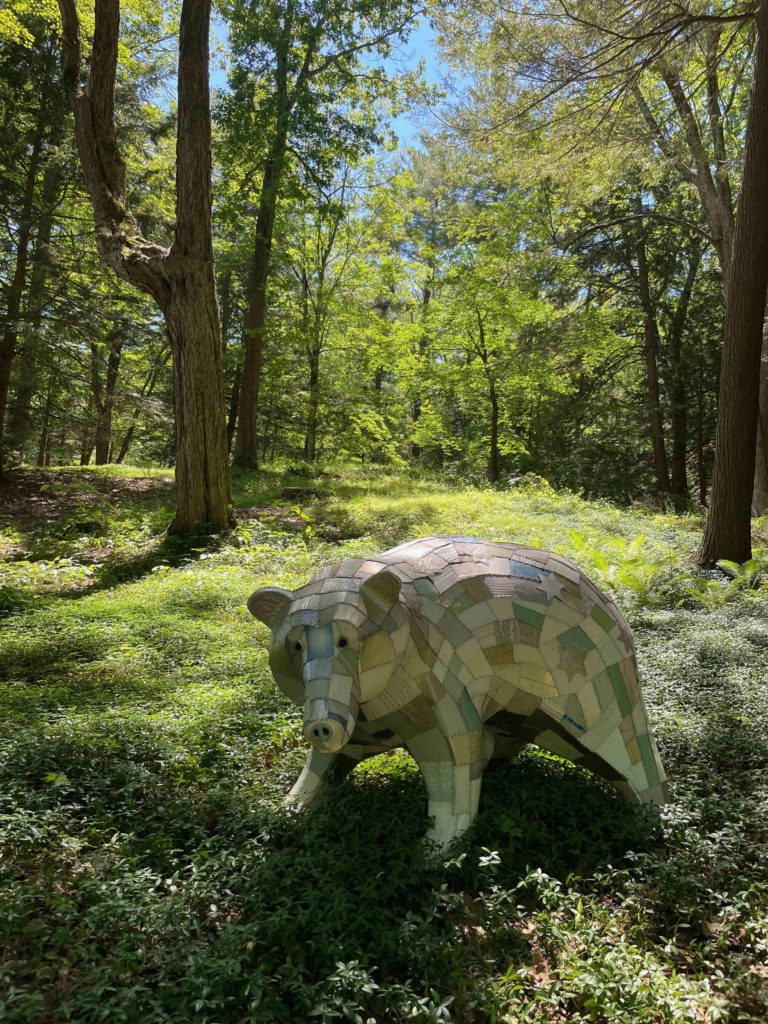
Berkshire sculptor Robin Tost's Spirit Bear honors the relatives of the black bears who live in the Berkshires.
Not all the work in a group show like this will be site-specific, made for the place, but still the curators and the artists know that the work they choose will spend the summer in the country, in a garden or a meadow or a clearing under the pine trees. It’s Edith Wharton’s garden too, and she can open another dimension, however you see her, as a novelist, a passionate and intelligent woman, an artist who hit her stride in her 40s, a Gilded Age aristocrat …
In her Italian garden, I find myself reading her words in a tribute in stone, and after the last year they stand out sharply: “In spite of illness, in spite even of the arch enemy sorrow, one can remain alive long past the usual date of disintegration if one is unafraid of change, insatiable in intellectual curiosity, interested in big things and happy in small ways.”
They can rasp in some says. A lot of people have good reason, right now, to be afraid of change — it takes a level of resources to face change on the scale we have seen and not have had to be afraid to lose the people you love or the place you live, or the means to support them, or the stability to be happy in small ways.
At the same time, intellectual curiosity and an interest in big things and a willingness to pay attention to small ones feel absolutely vital right now. I think she is talking about how to face the kinds of change you can’t stop, illness, aging, sadness, the kind of discouragement that makes it hard not to give up. And intellectual curiosity and willing attention are at the center of any answer as I have, too.
When I’m feeling cut off, I’ll hold onto questions like that … how to help someone I love in a hard time, how butterflies live, how the country is shifting, and how to do the most I can right now with what I have.
On the path down to the pond below the garden, a set of woven domes are sitting under the trees, and I recognize them. These aren’t part of the Sculpture Now show, or they weren’t made for it. At the winter solstice they were set up in the light and sound show in the walled garden, pulsing with color and music, as a promise of life dormant in the cold and waiting until spring. And now at the summer solstice they are out here in the ferns, weathered as beaver lodges in the new growth along the lake shore, and the wild lilies are in bloom.

